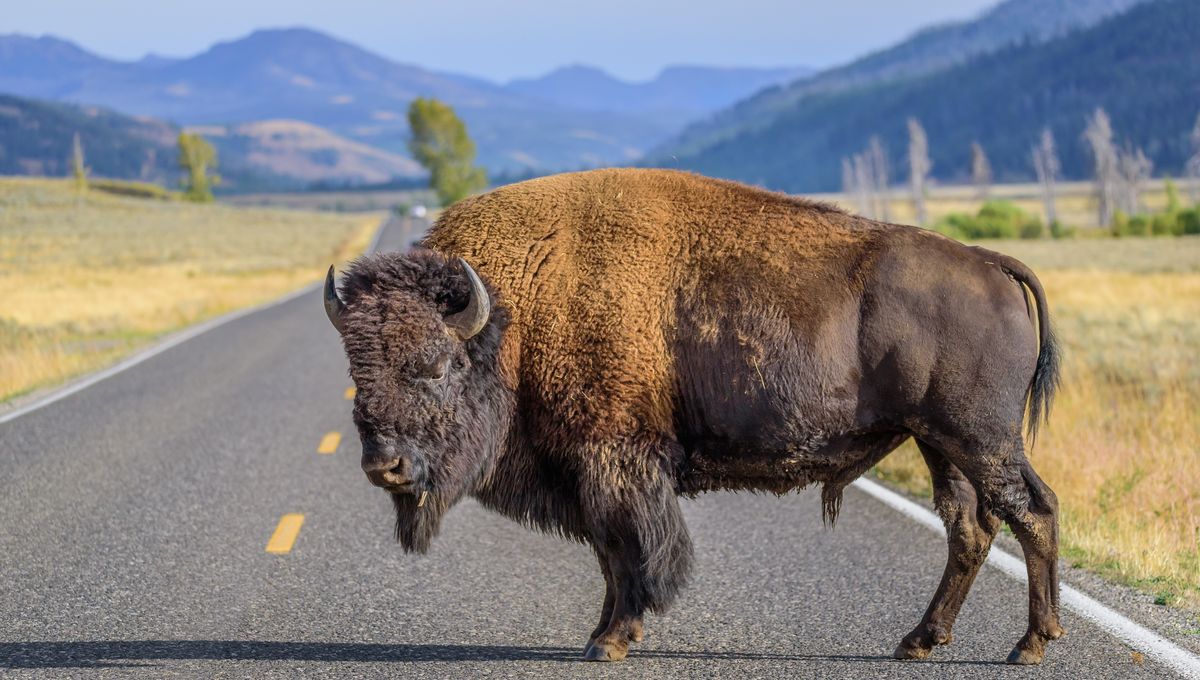
A man from Cape Coral, Florida, has been gored by a bison in Yellowstone National Park.
The 47-year-old was injured by the animal after he approached too close to it. Thankfully, he only sustained minor injuries from the encounter and has been treated by emergency medical personnel.
Bison have lived in Yellowstone National Park since the prehistoric age. In fact, this is the only place in the US where these animals have had a continuous presence for all that time.
As of 2024, there were estimated to be around 5,400 individuals in this population (the largest on public land in the US), which are allow to more or less roam freely across the expanse of the park’s landscape, as well as some of the nearby areas of Montana.
To say they are big animals would be an understatement. Bison are the largest land-dwelling mammal in North America, with males weighing around 900 kilograms (2,000 pounds) and females coming in at around 500 kilograms (1,000 pounds). Both sexes grow short horns that curve upwards, though males tend to have slightly longer ones.
Although they appear docile and placid, like large hairy cows, they are still wild animals and exhibit behaviors similar to those of their ancient ancestors. This includes congregating during the breeding season to find and compete for mates and to migrate to new habitats. On the one hand, this behavior has helped conservationists successfully restore their population after they nearly went extinct just over a century ago. But on the other, it also means these large mammals are not tame.
Like other wild animals (and me), bison can be aggressive if people do not respect their space. The National Park Service even urges visitors to keep a distance from the animals stating that it “is your responsibility to stay more than 25 yards (23 meters) away from all large animals – bison, elk, bighorn sheep, deer, moose, and coyotes – and at least 100 yards (91 meters) away from bears and wolves.”
They add that if the animals approach you, you should move away to maintain a safe distance.
Bison are known to defend their space if threatened by people, which has led to other violent incidents in the past. In 2023, another person was injured by a bison in Yellowstone, while a further two were injured last year. This latest case is the first reported in 2025.
Bison are responsible for more human injuries than any other animal in the national park.
Despite their massive bulky appearance, these animals are also remarkably fast, capable of running three times faster than humans.
The latest bison injury is currently being investigated by the park, but staff really due urge visitors to respect these animals. Don’t let the next update be about you.
Source Link: Florida Man Gets Too Close To Bison In Yellowstone, Promptly Finds Out Why This Is A Bad Idea